EdChoice Public Opinion Tracker: Top Takeaways November 2020
This week, we’ve posted reports based on our most recent survey results that are now posted on EdChoice’s Public Opinion Tracker.
Below are eight key findings from our most recent monthly tracking poll, which is conducted by Morning Consult. Our survey was based on a nationally representative sample of adults 18 years and older in the field November 12–18.
In a nutshell: Our tracking poll illustrates snapshots and trends in public opinion. We are also reporting parents’ views and experiences regarding their children’s education during the COVID-19 pandemic. We surveyed 2,200 adults among the general public who answered questions about COVID-19, teachers’ unions and several types of educational choice policies.
In addition to the monthly general population polling, Morning Consult has begun oversampling K-12 school parents among a national sample of parents living in the United States, including the District of Columbia. The sample is collected via stratified sampling based on race and ethnicity quota targets derived from the U.S. Census Bureau’s 2016 Current Population Survey. Approximately 700 additional K-12 school parents respond to our online survey each month as part of the oversample.
1. Americans rate the pandemic responses of all sectors worse than in October. In our survey, we ask respondents to rate various social institutions in their responses to the coronavirus. Every institution we asked about received noticeably lower shares of “Above Average” or “Excellent” scores in this November survey than they did in our October survey. Specifically, positive ratings of state governments dropped 5 percentage points, small businesses nine points, national media seven points, schools five points, local media six points, the federal government nine points, school districts seven points and national and multi-national corporations seven points.
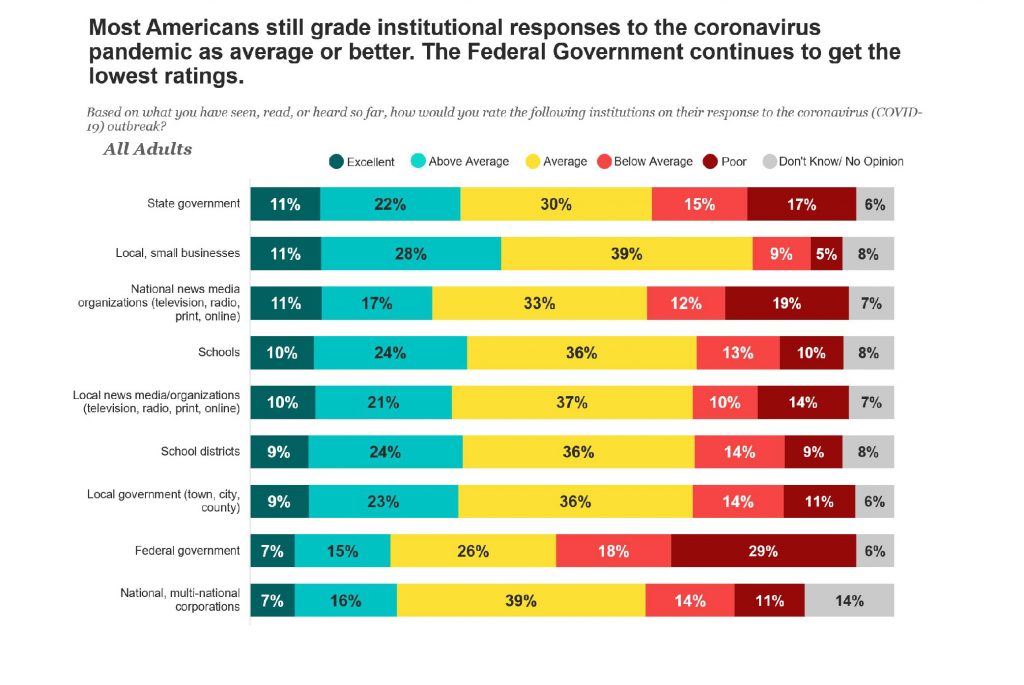
2. Parents are clearly less comfortable with children returning to in-person classes in the near-future. The share of school parents stating they are “Very Comfortable” or “Somewhat Comfortable” with their children returning to school dropped from 53 percent in October to 42 percent in November. This discomfort also was reflected in our question about when parents thought schools will be safe to open. About two-thirds of parents thought schools will not be safe until February or later, an increase of 16 percentage points versus October’s results.
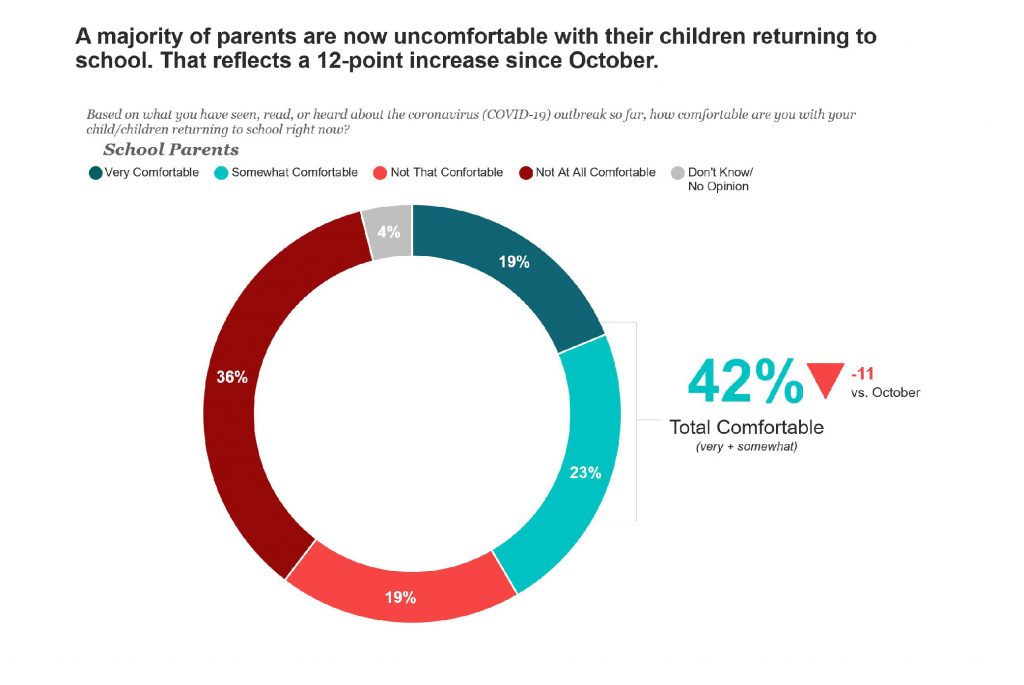
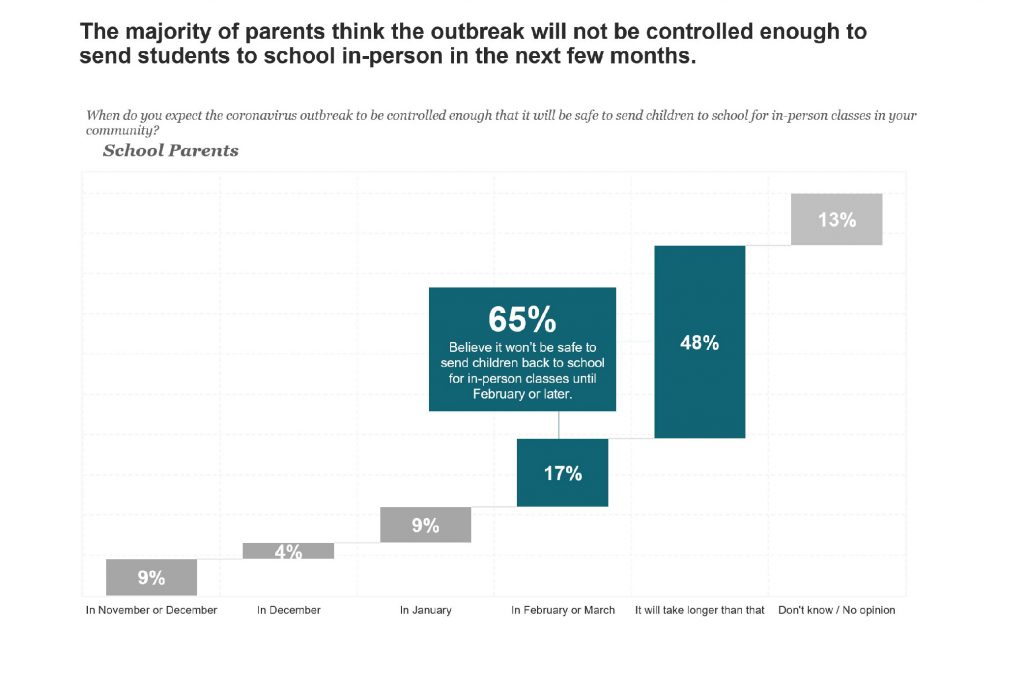
3. Positivity regarding homeschooling has dropped. After an 18-point spike in significant favorability toward homeschooling in July, the fervor dropped in the following months. In November, strong favorability toward homeschooling experienced its most significant month-to-month drop this year, putting strong favor back to its spring levels. Overall favorability toward homeschooling dropped 4 percentage points to 62 percent.
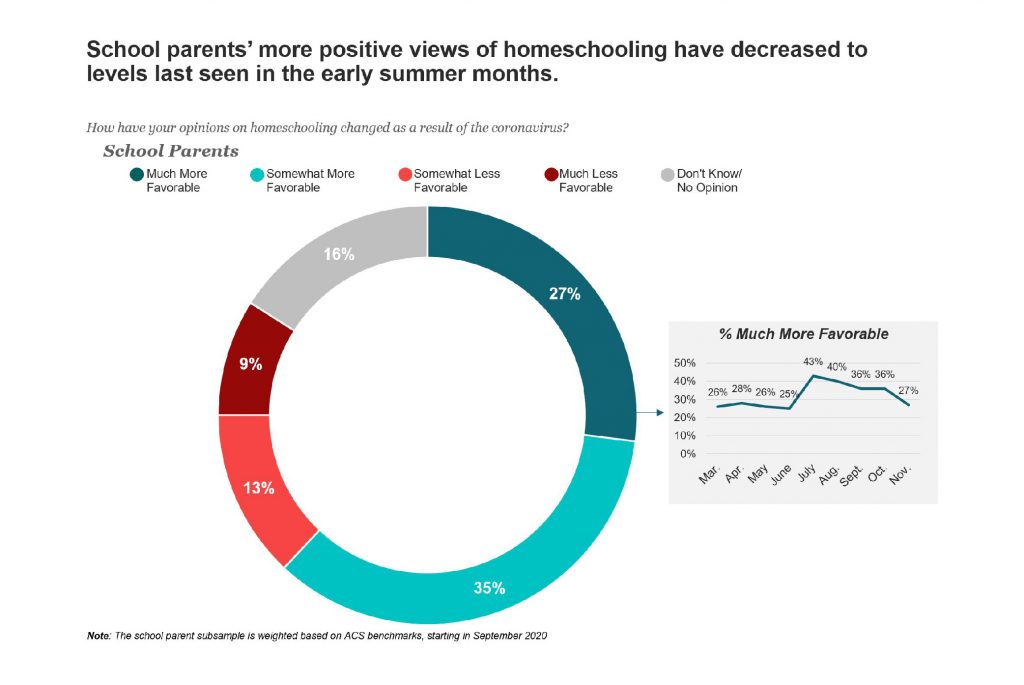
4. Parents are noticeably less confident in their ability to facilitate home-based learning. Most parents reported feeling at least somewhat prepared to get their child through remote learning, but that majority slimmed 13 percentage points this month. In October, 75 percent of parents said they were “somewhat” or “very” confident facilitating online learning, but only 62 percent said so in November. Additionally, parents said they wanted school administrations or teachers to provide curriculum and instruction for remote learning. This may lend some insight into what parents will do once the pandemic is over—an issue we probed in this month’s survey. Nearly two-thirds of parents (66%) told us they believe school is the best physical learning environment for their kids post-pandemic.
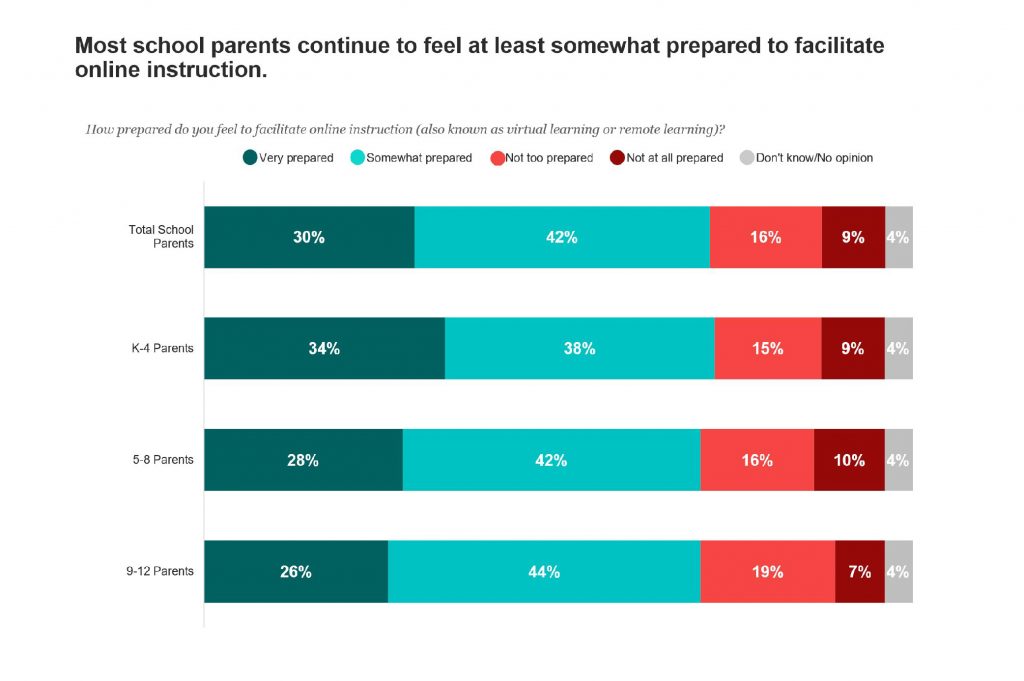
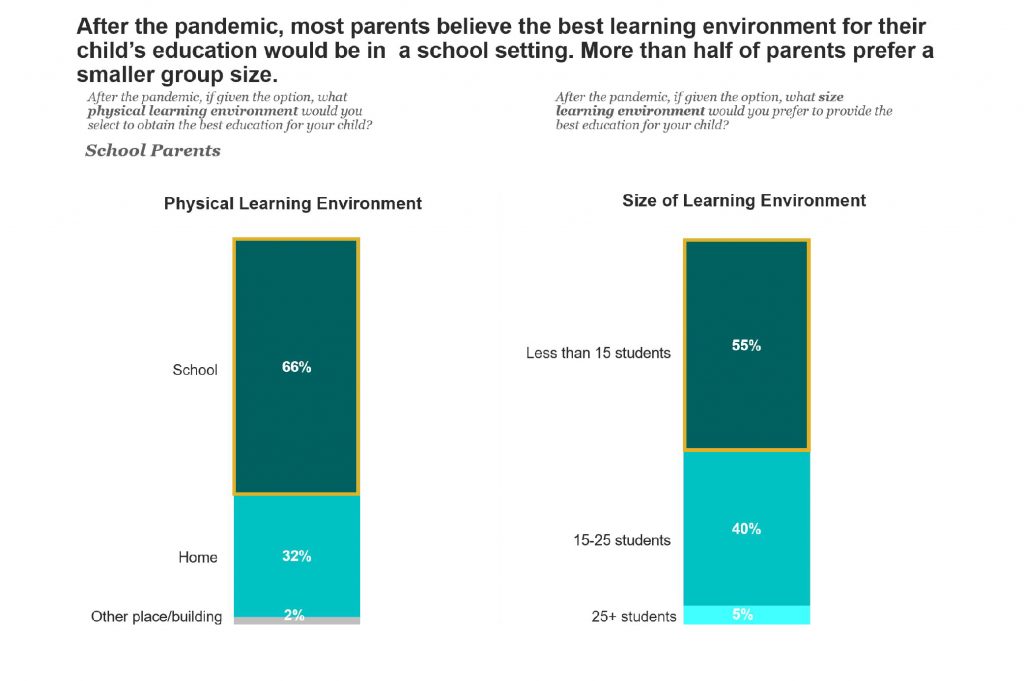
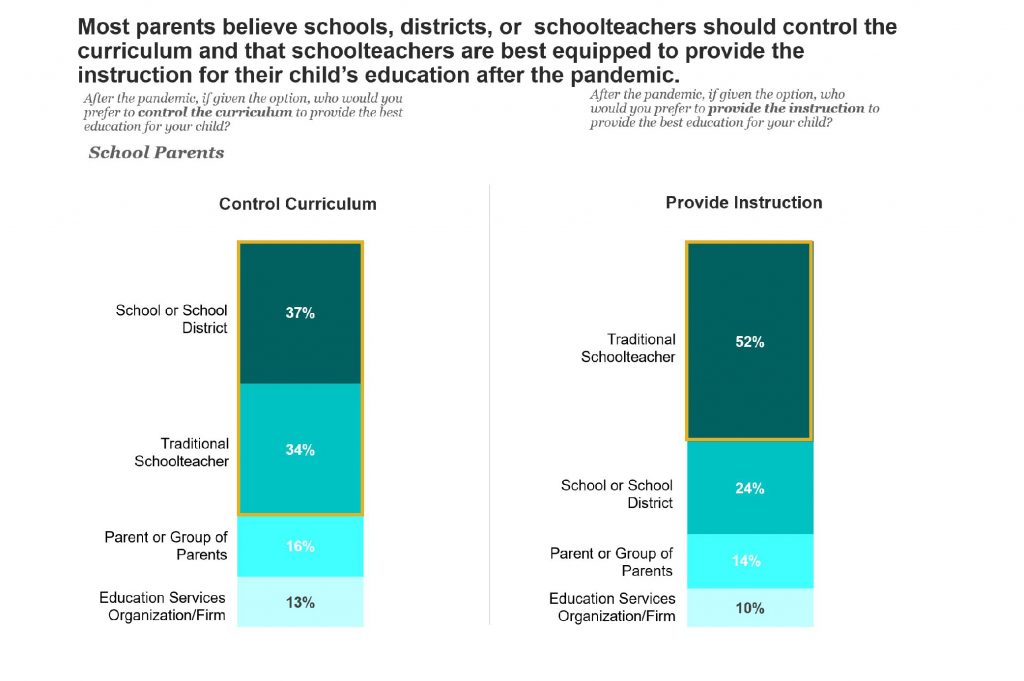
5. “Pandemic pod” participation dropped 16 percentage points, though interest in pods has remained steady. Participating children remain especially likely to be younger, come from higher-income households, and enrolled in private or charter schools. The share of school parents indicating their children currently participate in “pods” decreased from 31 percent to 15 percent. Likewise, those indicating no participation or interest in pods increased 15 percentage points. The share of parents not participating in pods but interested in doing so remained steady.
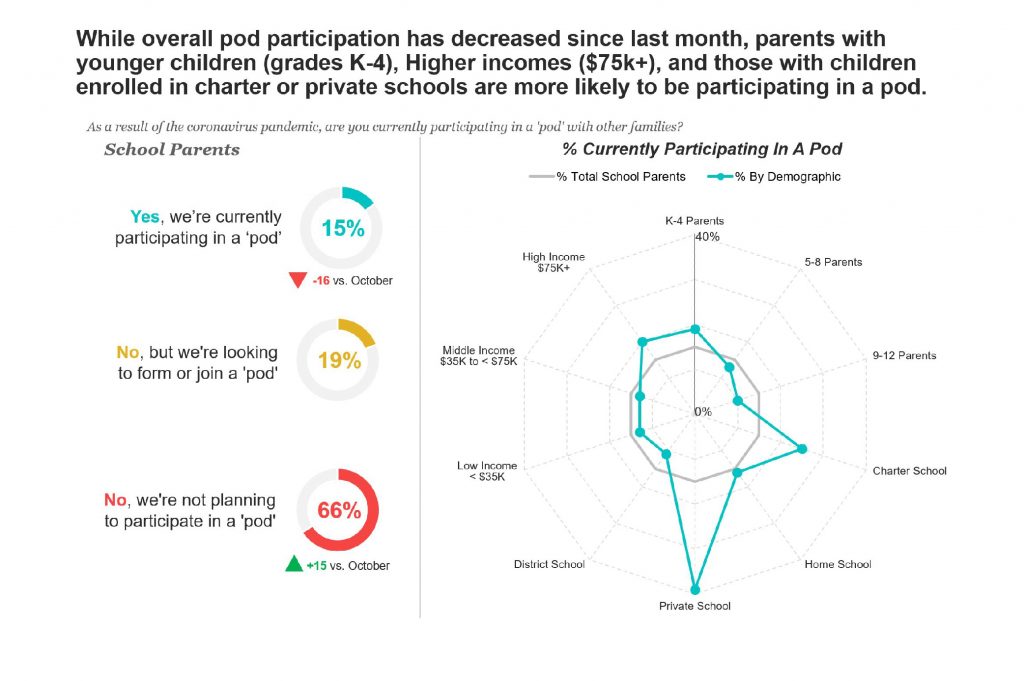
6. There appears to be some overlapping interest in “pandemic pods” and tutoring. The same demographics that are likely to participate or indicate interest in pods are those that are likely to indicate interest in finding tutoring opportunities for their children outside of regular school hours. This overlap resonates with the results of another survey question that found most parents interested in pods would use them as supplements to their children’s education rather than complete substitutes. Relatedly, our survey found that among parents interested in joining a pandemic pod, there’s a willingness to pay an average of about $457 per child per month. This willingness may reflect the largely higher-income, private school-enrolled demographics of those interested in pods and tutoring.
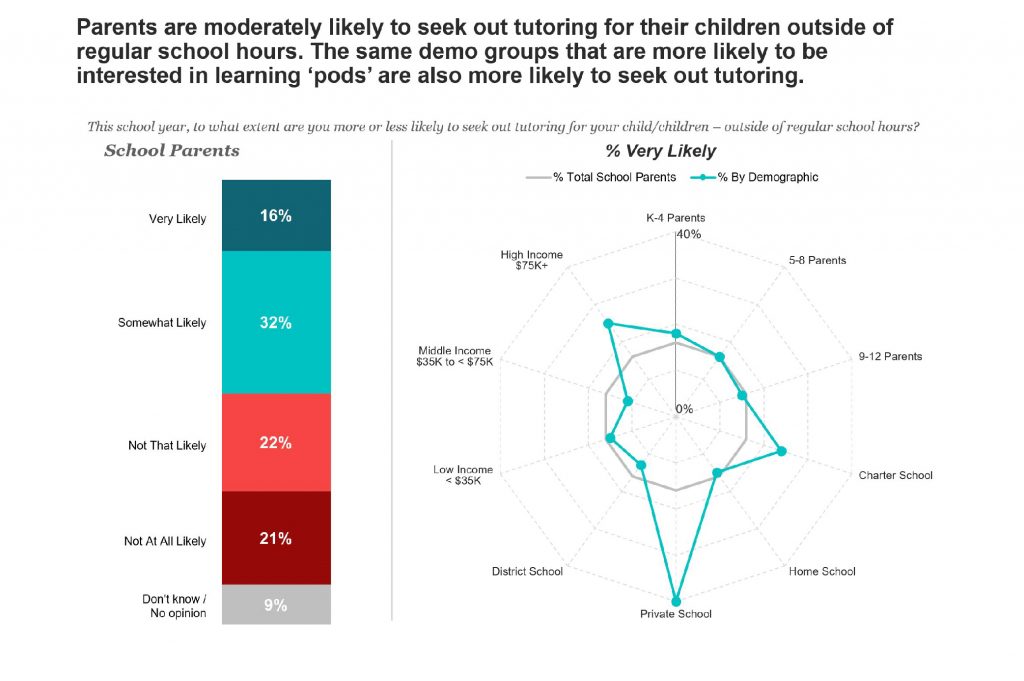
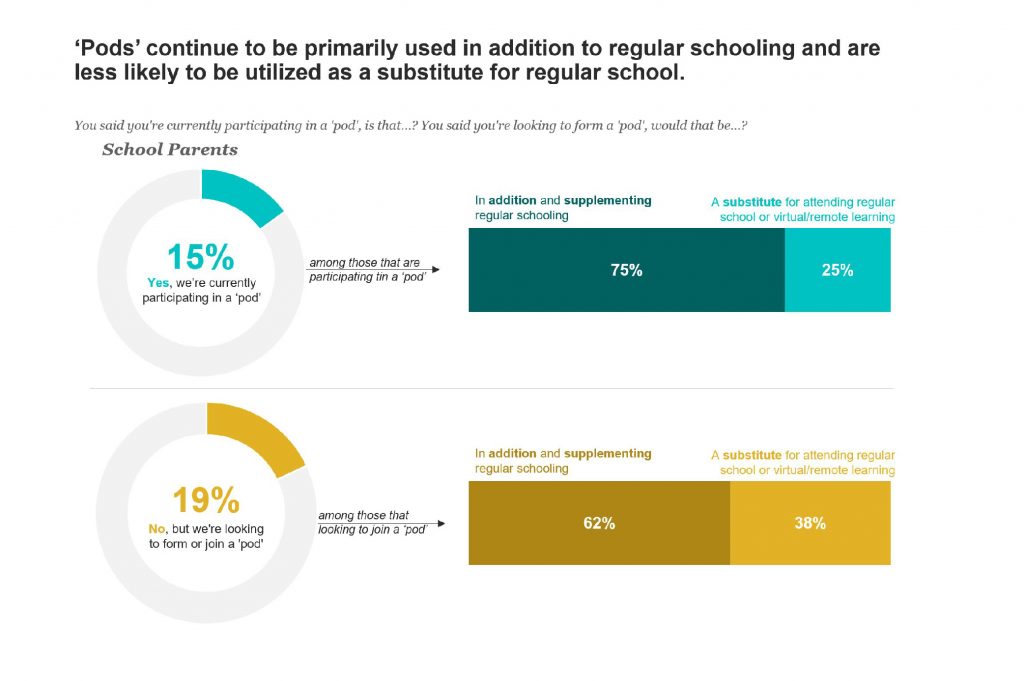
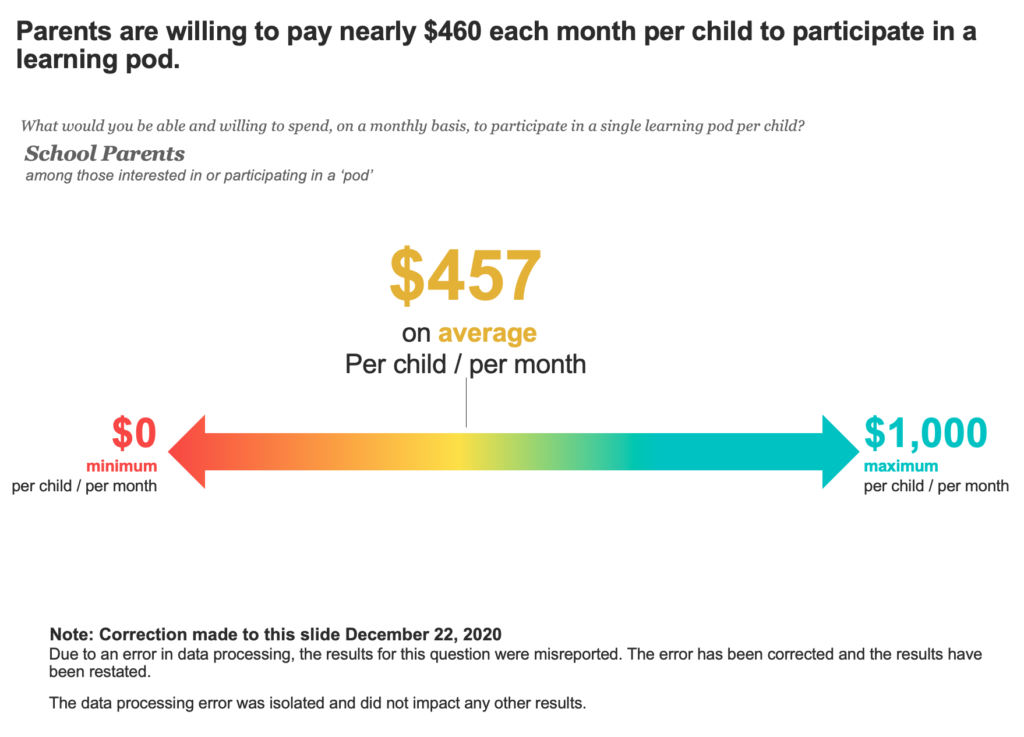
7. Americans are significantly more pessimistic about the direction of education. Each month this year, we have asked all respondents about how they feel about the direction of K-12 education on local, state, and national levels. The share of respondents feeling positive about the direction of education fell by 7 percentage points for local and state education, and positivity about education nationally dropped 10 percentage points. Narrowing the responses to those from school parents finds an even greater drop in optimism. Singling out the responses from school parents finds an even greater drop in optimism. Positivity about the direction of parents’ local K-12 education dropped from 57 percent to 48 percent from October to November. Positivity among parents regarding K-12 in their states dropped from 51 percent to 40 percent, and positive responses dropped from 48 percent to 32 percent regarding the country’s trajectory. In other words, while all Americans are worried about the future of K-12 education, parents of school-aged children are especially concerned.
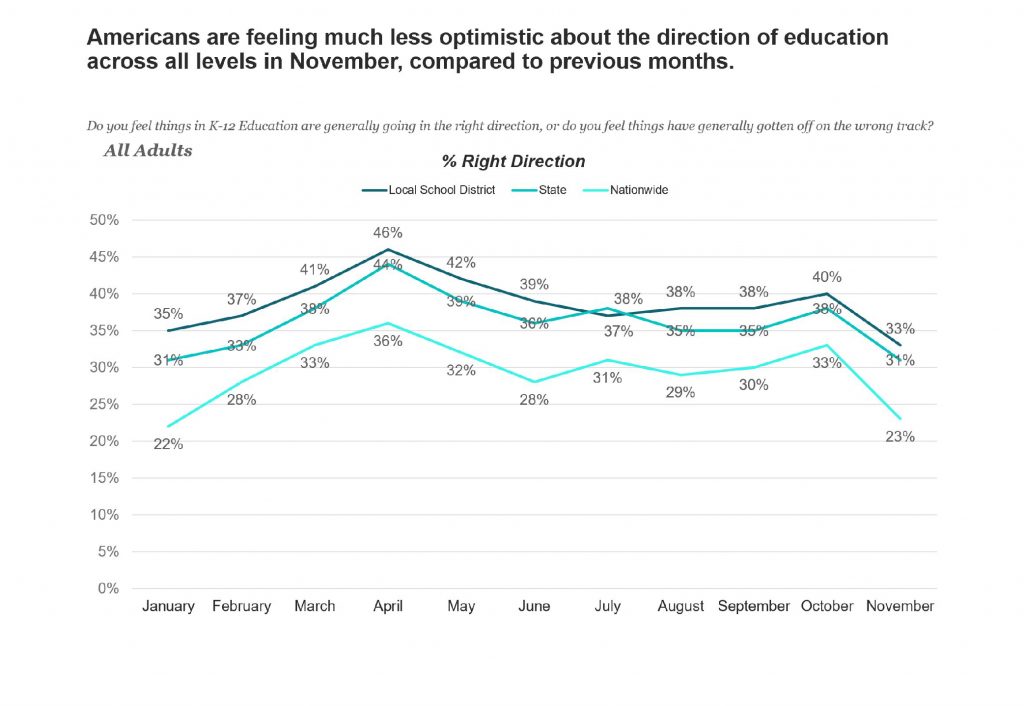
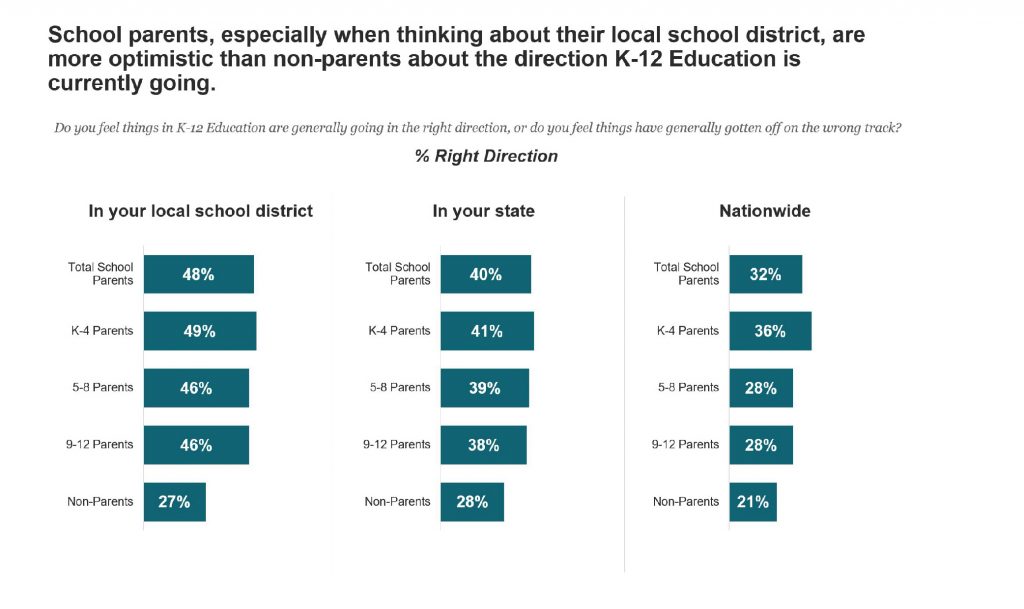
8. Support for all school choice policies remains high among school parents—with soft support for charter schools up eight points from last month. Whether it’s different learning options during the pandemic or support for programs that allow access to new schooling types, families clearly want choice. We’ve seen support for charter schools, vouchers and education savings accounts (ESAs) vary slightly since we began the tracker, but parents consistently report more than 60 percent support for all types of choice. This month, voucher support increased by four points to 62 percent, and ESAs were at 69 percent. The biggest jump was eight points for charter schools, which saw “somewhat” and “strongly” support register at 74 percent.
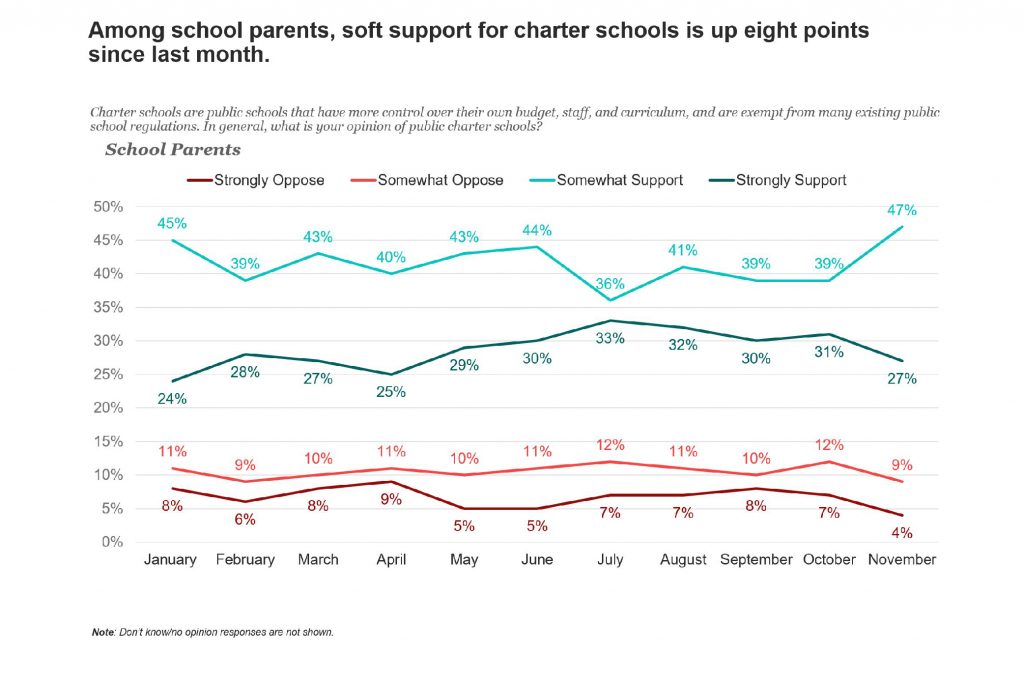
EDITOR’S NOTE: This post was updated on Dec. 22, 2020, to reflect an error in data processing on the question about how much parents are willing to spend per month on learning pods for their children. With this correction, the actual estimate is about three times larger than what was originally reported—$457 versus $138.
A lot of organizations are responding and doing great survey work in the turbulent times we are living in right now. We’ve started to catalog those polls and surveys asking COVID-19 and pandemic questions related to K–12 education. That archive page will be updated on a rolling basis roughly a couple times per month or as polls get released. Please don’t hesitate to let me know if we’re missing any to date.




